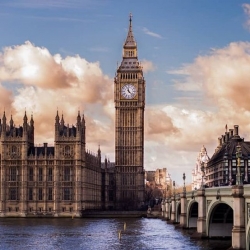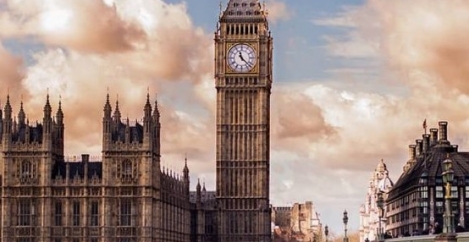September 13, 2024
Parliament refit could hold back UK net zero efforts for 40 years
 The extensive refurbishment of the Palace of Westminster, a project estimated to cost over £20 billion, could significantly impact the availability of specialist craftworkers needed for the UK’s net zero targets, according to Historic England. The public body is warning that the project, which could take up to 43 years and require around 3,000 specialist workers annually, would absorb a large portion of the nation’s skilled heritage plasterers, carpenters, and window specialists. This is likely to strain an already limited workforce at a time when the country faces a shortage of traditional building crafts essential for refurbishing older buildings.
The extensive refurbishment of the Palace of Westminster, a project estimated to cost over £20 billion, could significantly impact the availability of specialist craftworkers needed for the UK’s net zero targets, according to Historic England. The public body is warning that the project, which could take up to 43 years and require around 3,000 specialist workers annually, would absorb a large portion of the nation’s skilled heritage plasterers, carpenters, and window specialists. This is likely to strain an already limited workforce at a time when the country faces a shortage of traditional building crafts essential for refurbishing older buildings.
Historic England’s report highlights the need to expand the workforce skilled in traditional materials and techniques to refurbish millions of older buildings to meet net-zero commitments. The organisation noted the growing shortages of skilled carpenters and joiners, adding that the Westminster project is expected to further increase demand for these crafts, exacerbating the shortage.
Buildings account for 17 percent of the UK’s carbon emissions, and retrofitting older homes is seen as key to reducing this. The report outlines the urgent need for skilled workers to address shortages in endangered crafts, such as flintknapping, vernacular slating, and brickmaking, to meet the growing demand driven by the Westminster project and the nation’s net-zero goals.
A decision on how to address the decaying Palace of Westminster is expected next year, with three options under consideration: a full decant of both Houses, relocating the Commons chamber within the Palace, or a cheaper rolling program of enhanced maintenance. Politicians are concerned about the public’s reaction to the project’s ballooning costs, especially after the restoration of Elizabeth Tower, which cost £80 million, far exceeding the original £29 million estimate in 2016.
If approved, the Westminster project would cost an estimated £450 million annually, with total costs depending on the approach taken. It could bind up to a third of the nation’s heritage craftworkers, including plasterers, window experts, carpenters, and joiners, whose skills are already in high demand.
The report also addresses the broader challenge of meeting the UK’s 2050 net-zero goal, which involves retrofitting approximately 29 million homes, many of them older properties. Historic England noted that around 20 percent of England’s housing stock was built before 1919, contributing to higher heating emissions. Additionally, half a million churches, public buildings, and other structures also predate 1919.
Ian Morrison, director of policy and evidence at Historic England, expressed concerns about the country’s ability to manage the increasing demand for traditional building skills. “The condition of many traditional buildings is poor due to a backlog of maintenance,” he said. “With the restoration of the Palace of Westminster on the horizon and the need to retrofit vast numbers of older buildings, we face a significant challenge.”














